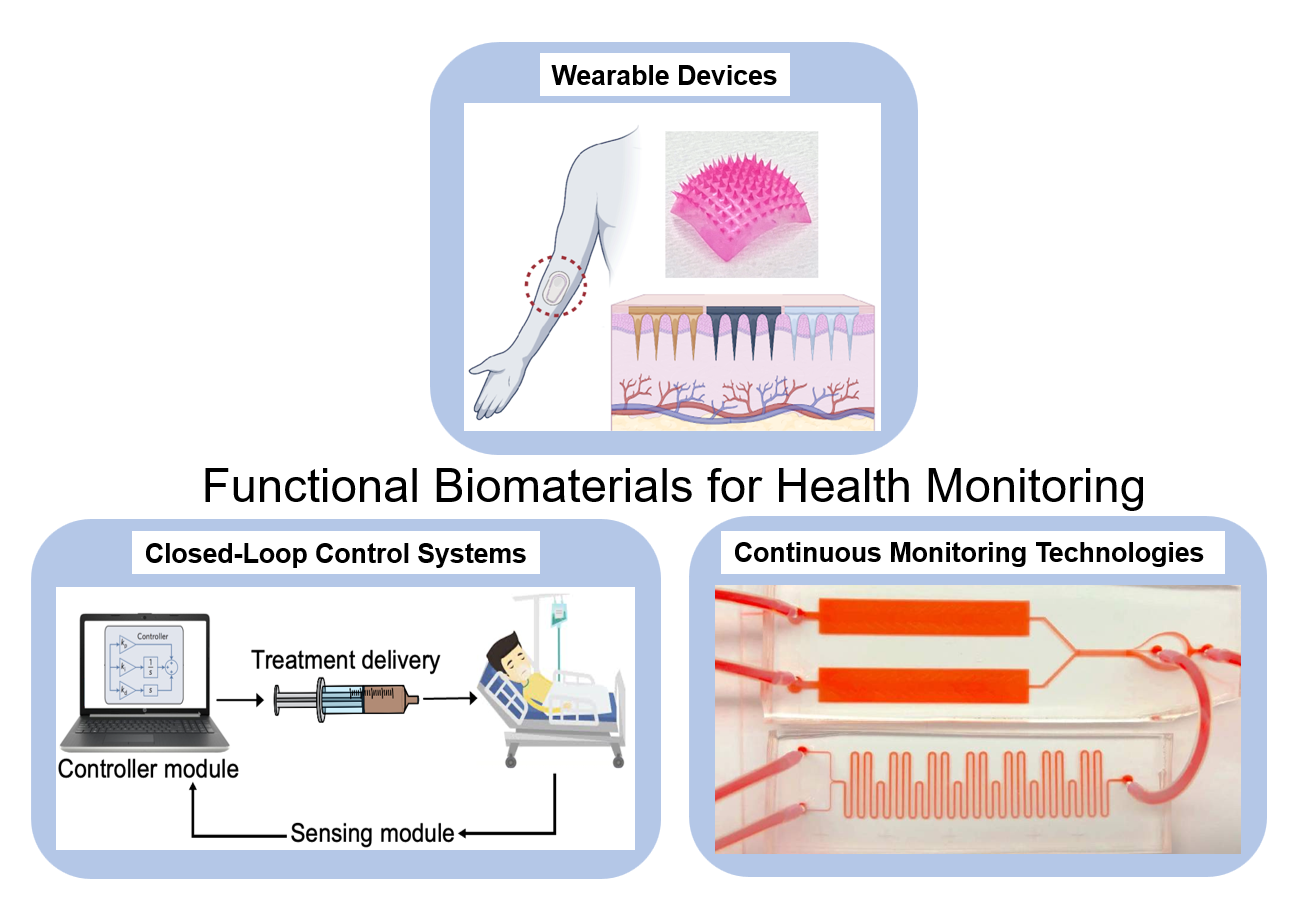We apply innovative engineering solutions and functional biomaterials to tackle major challenges in diagnostics and therapeutics. Our advancements introduce a new generation of polymeric wearable systems for minimally invasive monitoring and treatment in outpatient settings. We also develop technologies that enable continuous, real-time tracking of clinically important biomarkers, an urgent need that cannot be accomplished using gold standard techniques.

PROJECT 1: WEARABLE DEVICES FOR OUTPATIENT MONITORING
Constant health monitoring aims to reduce hospitalization and the need for constant supervision of the patients. For an outpatient monitoring device to be effective, it must meet certain criteria: it should demand minimal patient involvement, must be reliable, must be connected, remain stable with infrequent replacements, be cost-efficient, be compatible with humans, and ultimately be self-powered.

Microneedle (MN) assays have been extensively reported and applied toward a variety of wearable biosensing. These devices have the capability to penetrate through the skin, allowing access to the interstitial fluid (ISF) which contains biomolecules of great clinical significance. Traditional MN biosensors utilize solid and rigid MNs as the device electrodes which are not compatible with mechanically soft and curved skin. Rectifying this significant mismatch in physical properties using functional polymeric and flexible biomaterials holds the potential to open extensive opportunities in the development of biocompatible systems that seamlessly integrate with human skin with unique capabilities in clinical healthcare.
To address this unmet need, my group has developed novel wearable platforms that unlike previous rigid MN biosensors use, for the first time, flexible, hydrogel microneedle (HMN) electrodes for continuous, real-time measurement of patient health status. While HMNs have been used in drug delivery and cosmetic applications, their potential for in-situ sensing has remained unexploited until now. Our electrodes utilize state-of-the-art conductive and flexible yet mechanically strong polymers to tackle the problems associated with rigid MN biosensors.
PROJECT 2:CONTINUOUS MONITORING TECHNOLOGIES FOR HIGH-RESOLUTION AND UNIVERSAL TRACKING
Technologies that can continuously measure circulating biomolecules would have a transformative impact towards the vision of precision medicine. At IDEATION Lab, we advance the development of a real-time enzyme-linked immunosorbent assay (RT-ELISA) via integration of quantum dots (QDs) as fluorophores.

The new QD integrated RT-ELISA (QIRT-ELISA) enables multiplexed, continuous tracking of a variety of clinically important biomarkers. In collaboration with Dayan Ban’s group at Waterloo, we have developed a miniaturized detection system that employs fiber optics for QD excitation and emission collection. In collaboration with Schertzer group at McMaster, we apply the system for continuous monitoring of diabetes hormones/peptide.
PROJECT 3: CLOSED-LOOP CONTROL SYSTEM FOR INPATIENT AND OUTPATIENT CARE
We aim to integrate our wearable HMN biosensors into closed-loop control systems, enabling not only detecting fluctuations in the concentration of the target analytes but also ensuring precise administration of therapeutics for both inpatient and outpatient treatment.

Our long-term vision is to establish a wearable HMN based closed-loop system that combines disease detection/monitoring and treatment procedures into a single HMN-based platform.